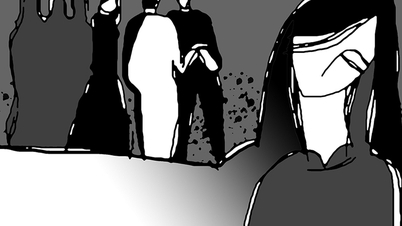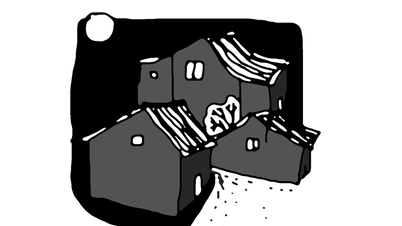Jack London (1876-1916) was the first American proletarian writer. He was born and raised in a poor family in San Francisco, California, with a mother who was a music teacher and a father who was an astrologer.
![Strolling in the American Literature Garden [Part 11] Dạo chơi vườn văn Mỹ [Kỳ 11]](https://s3-hn-2.cloud.cmctelecom.vn/vietnam/resource/IMAGE/2025/1/19/f54033ff9fd8404eb8c3dc40c2449fe3) |
| Writer Jack London. |
At age 10, he sold newspapers; at 14, he worked in a cannery; at 16, he was a fishing policeman; at 17, he worked a year on a ship; at 18, he wandered across America; at 21, while in college, his father revealed to him that he was unable to have children after marrying his mother. Indignant, he dropped out of school to join the rush of gold seekers in the Klondike, beginning a life of bitter but glorious wandering.
Jack London began writing at the age of 20, but it was not until he was 27 that he became famous with The Call of the Wild (1903), then The Sea Wolf (1904), White Fang (1907), The Iron Heel (1907), Burning Daylight (1910). Many of his works symbolize the “wolf law” of the capitalist social order.
Jack London, along with Stephen Crane (1871-1900), Frank Norris (1870-1902) and Upton Sinclair (1878-1968), were labeled by US President Theodore Roosevelt as “mud-stirring” writers for exposing the corruption of American politics and business. London lived in squalid houses in the capital so he could write Men from the Abyss (1903), a naturalistic novel. Class War (1905), a collection of socialist articles, defended socialism and proletarian revolution, while also exalting heroes who stood on the side of the destitute.
It was not until he was 37 that he became rich from his writing career and his books were translated into many languages around the world, including Vietnamese (such as Iron Heel, Burning Daylight, Call of the Wild ...). He committed suicide at the age of 40 in a luxurious ranch in California. That showed the escape of a fundamentally romantic writer, feeling lost in a hostile world, making readers pay attention to his work and personality.
The Call of the Wild made Jack London suddenly famous. Later, generations of readers read his works in translation in many languages, thanks to which he became rich. The story is about a dog named Buck , who lives on a judge's farm in the temperate South of the United States. In the fall of 1894, people found gold in the Klondike region.
So the people from all over flocked to Alaska in the far cold North. Buck was sold and taken there. Buck had to change his way of life. No longer being pampered or respected by anyone, he had to find a way to adapt to the harsh natural environment, taste the beatings, stretch his back and stretch his neck to pull the sled; his muscles were like steel, his survival instinct rose in his subconscious.
Life became even harder when Buck was sold to three gold-seekers, adventurers who lived recklessly. He fought for his life and became the leader of the pack. The owners and the dogs fell into an ice abyss and died. Buck was fortunately saved by a man named Thorntan.
From then on, humans and animals were bound together by mystical and profound feelings. Buck worshiped his master as a god. Twice he saved his master's life, once he brought his master a profit of over 1,000 USD in a challenge. After his master was killed by Indians, Buck could not resist his instincts, followed the call of the wild, returned to the forest with his fellow wolves, he was mastered, and every year he did not forget to make a pilgrimage back to the place where Thorntan died.
The Call of the Wild is a thesis novel. The author intended to illustrate Darwin's theory of evolution, the power of the environment, and the law of adaptation for survival. But the story is very attractive, the animals are all distinct personalities, full of courage, ambition, and cruelty. In the early 20th century, the work was welcomed by an industrialized class that craved wild instincts and a life close to nature.
The Sea Wolf tells the story of an adventure at sea. A writer named Humphrey is shipwrecked and is rescued by the captain of the sailing ship “The Ghost” named Wolf, who is very tough and heartless. Humphrey is forced to work as a chambermaid and is mistreated. On board the ship is a beautiful female poet named Maude who is also rescued. Both men are interested in her.
One day the “Ghost” itself sank. Humphrey and Maude managed to swim to a deserted island. When the hull was washed ashore on the island, where Wolf was still alive, he prevented two young men from repairing the boat and returning. He eventually became blind and paralyzed; until his death, he was still hot-tempered and courageous. Humphrey and Maude were rescued and returned to civilization.
White Fang is a novel that follows the reverse sequence of The Call of the Wild . The author tells the story of a wolf-like dog that is gradually tamed, and is mistreated by its original owner, who wants to train it to be a fighting dog. Its later owner, a mining engineer, rescues it and takes it home to the West to tame it, and then it is seriously injured while protecting its owner's family against escaped criminals.
The Iron Heel is a science fiction novel set in the 26th century, four centuries after the world has escaped the “iron heel” of the ruling bourgeoisie. The author considers that at that time, he discovered a diary written by a female revolutionary named Evit about the revolutionary activities of her husband, Enot, who was arrested and executed in 1932.
The story tells of events from 1912. Anet, a worker and member of the Socialist Party, persuaded many people to make social revolutions, including a bishop. He was arrested, escaped from prison, and prepared two uprisings, all of which were suppressed by the “iron heel”. It was not until the 23rd century that the “iron heel” was defeated. The style of the work is like a detective adventure novel, although it can be classified as “proletarian literature”.
Source: https://baoquocte.vn/dao-choi-vuon-van-my-ky-11-274875.html


![[Photo] Flag-raising ceremony to celebrate the 50th anniversary of the Liberation of the South and National Reunification Day](https://vphoto.vietnam.vn/thumb/1200x675/vietnam/resource/IMAGE/2025/4/30/175646f225ff40b7ad24aa6c1517e378)
![[Photo] General Secretary To Lam presents the title "Hero of Labor" to the Party Committee, Government and People of Ho Chi Minh City](https://vphoto.vietnam.vn/thumb/1200x675/vietnam/resource/IMAGE/2025/4/30/08a5b9005f644bf993ceafe46583c092)































![[Photo] Demonstration aircraft and helicopters flying the Party flag and the national flag took off from Bien Hoa airport](https://vphoto.vietnam.vn/thumb/1200x675/vietnam/resource/IMAGE/2025/4/30/b3b28c18f9a7424f9e2b87b0ad581d05)

































































Comment (0)